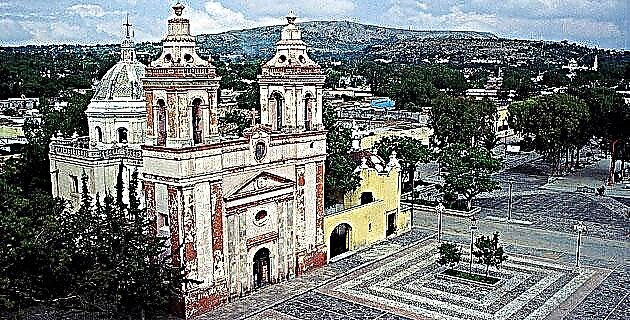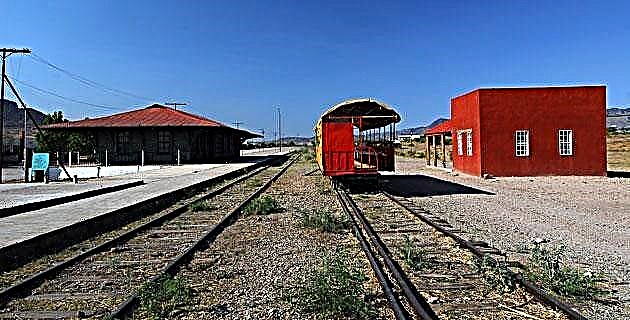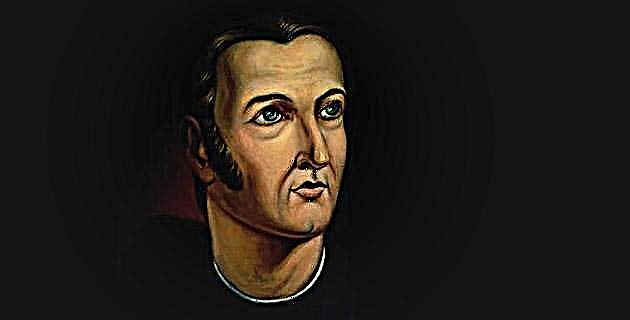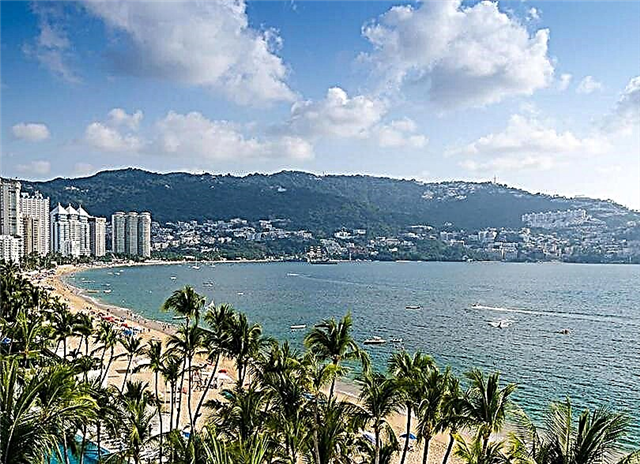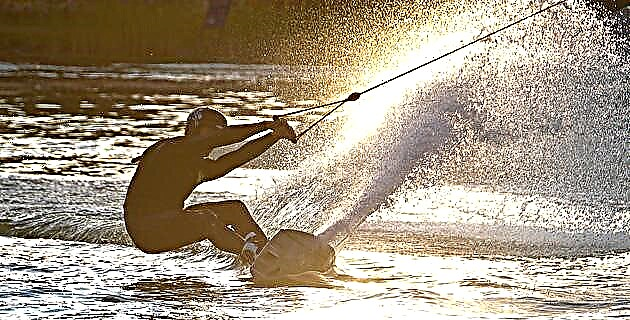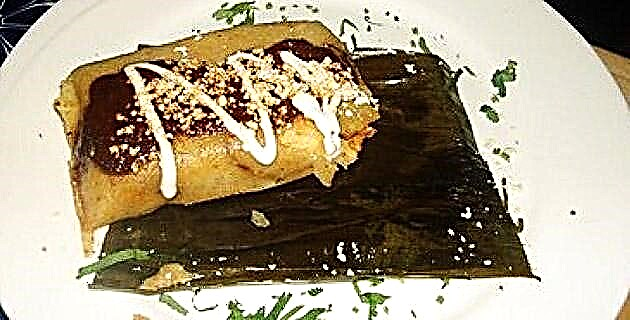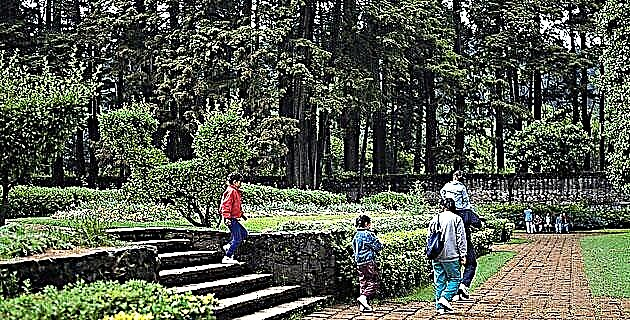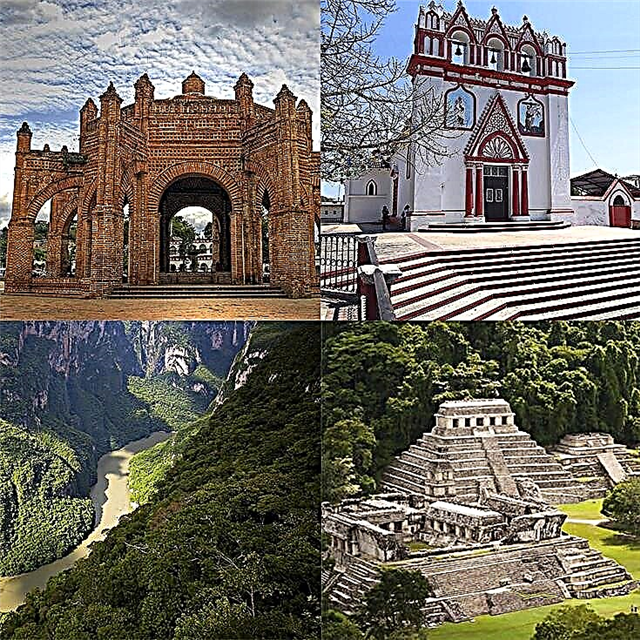The variety of tourist attractions in Chiapa de Corzo is one of the widest among all the Magic towns Mexicans. With this complete guide, we hope that you will not miss any of the many attractions that the people of Chiapas have to offer.
1. Where is the town?
Chiapa de Corzo is a town located in the central region of the Mexican state of Chiapas, in the extreme southeast of the country. It has magnificent architectural testimonies of its colonial past, with natural places of incomparable beauty, with beautiful artisan traditions and with legends that it is a delight to hear from the mouth of its inhabitants. These attributes and several others earned him elevation to the rank of a Mexican Magical Town in 2012.
2. What is your climate?
The town has a subhumid and warm climate, with the thermometers showing an average of 24 ° C in the year. Seasonal temperature variations are minimal in Chiapa de Corzo, ranging between 22 ° C in the coldest months (December and January) and 25 - 26 ° C in the hottest (April to September). It rains just under 1,000 mm a year, mainly between May and October. Between December and March it hardly rains.
3. How do I get there?
To go from Mexico City to Chiapa de Corzo you must take a flight to Tuxtla Gutiérrez, the state capital and the most important nearby city, unless you prefer to undertake the long road trip to the southeast from the DF, of 850 km and 10 Hours of duration. Tuxtla Gutiérrez is just 15 km from Chiapa de Corzo on Federal Highway 190, also called the Panamericana.
4. Can you tell a little about your story?
Chiapas means "water that runs under the hill" and that was the name that the Aztecs gave to the Soctón Nandalumí people who inhabited the central region of the current state territory and were almost exterminated by the conqueror Pedro de Alvarado. During the colony, Chiapa de Corzo was the most important indigenous city in the region, being called "Chiapa de los indios", in contrast to San Cristóbal de las Casas, which was the "Chiapa of the Spaniards."
5. What are your main tourist attractions?
The Magic Town has a large number of colonial buildings of incomparable beauty, among which are La Pila, the Temple of Santo Domingo de Guzmán (the Great Church), the Temple of Calvario, the Ex convent of Santo Domingo de Guzmán and the Ruins of the Temple of San Sebastián. It is also close to an important archaeological zone, has natural spaces such as the Cañón del Sumidero and El Cumbujuyú National Park, and has beautiful artisan traditions such as lacquer, wood carving, embroidery, pyrotechnics and jewelry.
6. What is La Pila?
It is the most emblematic monument in Chiapa de Corzo. It is a majestic fountain from the 16th century, also called La Corona, with Mudejar lines, built in brick and diamond-shaped. It is a unique architectural jewel of Hispano-Arab art in America, which, being a source of water for the population, became their main meeting place. In its structure of 25 meters in diameter and 15 meters high, it brings together the octagonal plan and the use of brick, characteristic of Islamic art; structural elements of the Gothic and a Renaissance dome.
7. What are the main attractions of the Santo Domingo de Guzmán Temple?
It was built in the middle of the 16th century between one of the banks of the Grijalva River and the main square and is called the Great Church by the people of Chiapas. It is the best preserved religious building in Chiapas among those built in the 1500s and it is in the Mudejar style, with Gothic, Renaissance and neoclassical elements. In its main tower it has a huge bell, one of the largest among the Christian temples in America.
8. What stands out in the former convent of Santo Domingo de Guzmán?
What was once a Dominican convent in Chiapa de Corzo was built next to the Church of Santo Domingo de Guzmán during the 16th century. In the mid-19th century, during the War of the Reform, the convent was secularized and remained a non-religious building, unlike the temple, which retained its ecclesiastical function. Since 1952, the former convent is home to the Laca Museum, exhibiting a collection of 450 pieces by national and foreign artists.
9. What stands out in the Temple of Calvary?
In this temple, warrior and religious history are mixed, nothing strange in the turbulent Mexican past. Due to its strategic location on a hill, it was converted into a fort during the war against the French. In the Battle of Chiapa de Corzo, the Mexican republicans delivered a major defeat to the imperialists in October 1863 and this temple was one of the main witnesses. Now tourists mainly go to admire its pulpit and its reliefs.
10. What are the ruins of the Temple of San Sebastián like?
The Temple of San Sebastián, built on the Cerro de San Gregorio in Chiapa de Corzo, remained intact for more than two centuries, until it was almost completely destroyed by a strong earthquake at the end of the 19th century. A waterspout in 1993 completed the destructive work of nature, but the beautiful Mudejar architecture used in its raising can still be seen in the ruins of its main facade and its apse. Due to its excellent geographical position, it was another fortress during the Battle of Chiapa de Corzo.
11. Is there any other museum?
Franco Lázaro Gómez was a versatile artist and intellectual from Chiapas who distinguished himself in painting, sculpture, drawing, engraving, illustration and letters, despite dying very prematurely at the age of 28 in 1949. He died in the middle of an expedition through the Lacandon Jungle when It was part of a scientific and artistic expedition led by Diego Rivera and Carlos Chávez. Now Chiapa de Corzo remembers one of his most beloved sons with a museum about his work, which is located next to the Laca Museum in the former Santo Domingo de Guzmán convent.
12. Where is the Archaeological Zone?
The Archaeological Zone of Chiapa de Corzo, located to the east of the town, is one of the oldest and most important testimonies of the Zoque civilization in Chiapas, although it was only prepared for its full archaeological, cultural and tourist use just 5 years ago. In 2010 he contributed a piece of enormous relevance, when a 2,700-year-old tomb was discovered, which could be the oldest found so far in all of Mesoamerica.
13. What other interesting things does the Archaeological Zone have?
The main set of the archaeological site is made up of an almost square plaza around which the main buildings are arranged. It has buildings and ruins dating from 850 BC to 550 AD, offering testimonies from the Middle Preclassic, Late Preclassic and Early Classic periods. Its ruins have made it possible to establish how the temples built in the place were formed and human remains with offerings have also been found in the tombs. The archaeological site is equipped with toilets and other services.
14. What is in the Sumidero Canyon National Park?
The spectacular Sumidero Canyon is the main natural attraction of Chiapa de Corzo, since although it is closer to Tuxtla Gutiérrez, it belongs to the Chiapacorceño municipality. The gigantic gorge with the Grijalva River running at the bottom, has depths of more than 1,300 meters and is an ascending or descending sample of the different types of habitats in Chiapas. High above, birds of prey glide through the alpine vegetation, while below crocodiles prowl open-mouthed in search of butterflies and other more succulent prey.
15. Are there hot springs and waterfalls?
In the small town of Narciso Mendoza, near the municipal seat of Chiapa de Corzo, on the road to La Concordia, is El Cumbujuyú, a small hot springs eye. It sprouted naturally and was already known during the colony. According to oral tradition in the town of Narciso Mendoza, an aristocrat named María de Angulo sent it to be enlarged as a thank you because the warm waters supposedly cured a son of paralysis. In the Sumidero Canyon is the beautiful El Chorreadero waterfall, with a nearby cave.
16. How is the Fiesta Grande in Chiapa de Corzo?
Chiapa de Corzo is adorned in its January Festival, a triple celebration in which homage is paid to San Sebastián, the Lord of Esquipulas and San Antonio Abad. It takes place in the week of January 20, the day of San Sebastián. The party is led by Los Parachicos, some famous dancers in colorful costumes that in 2009 were declared Intangible Cultural Heritage of Humanity by the UN. The Parachicos go with masks and rattles, touring the town, with the crowd behind. During the Fiesta Grande the varied crafts of Chiapas are exhibited and its rich gastronomy is offered.
17. Are there other attractive parties?
Chiapa de Corzo spends most of the year celebrating. Apart from the Fiesta Grande and that each neighborhood has its own particular festival, they celebrate the Marimba Festival, Parachicos festivals, the Drum and Carrizo Festival, the Santo Domingo de Guzmán festival and the anniversaries of important events. Additionally, in the Sumidero Canyon, high-altitude diving competitions are held and in the archaeological zone the symbolic days of astronomy are celebrated, such as solstices and equinoxes. Another important festivity is Corpus Christi, when the Calalá Dance is performed.
18. What is the typical musical genre of the locality?
The musical manifestations of the Magic Town are led by the Zapateados de Chiapa de Corzo, a drum and reed music that is danced by the Parachicos and by all those who participate in the Fiesta Grande. It is played with pre-Hispanic instruments, although it can carry modern rattles. Although pre-Columbian, this music has Spanish traits contributed by flamenco, the chacona, the fandanguillo and the folía. Other musical manifestations present in Chiapa de Corzo are the traditional band of wind instruments and the marimbas orchestra.
19. What can you tell me about the lacquer tradition?
Chiapas lacquer is an artistic tradition of pre-Columbian origin that is now a mestizo art after merging with the techniques and customs brought from Europe by the Spanish. It was started by the Indians to decorate their religious objects and later spread to all kinds of lacquered pieces, such as gourds and furniture. The characteristic features of Chiapas lacquer are the use of the little finger to paint and the use of natural motifs such as flowers and birds in artistic design.
20. What about wood carving?
Wood carving is another popular art that the craftsmen of Chiapas masterfully develop. It began as a pre-Hispanic artistic manifestation, with which the natives represented the animals for which they felt the greatest veneration and fear; It continued to be a religious necessity to adorn Catholic temples with images and today it is a beautiful cultural tradition. The images carved by local artisans are vivid symbols of the being or the object represented.
21. What about your embroidery?
Chiapas embroidery is nationally and internationally known for its beauty and finesse. Chiapa de Corzo is the cradle of the Chiapas costume, the typical female dress that most symbolizes the women of Chiapas. Both the blouse with a neckline and the long skirt are made of satin and are upholstered with flowers and other motifs embroidered manually with silk thread. This technique is applied to other pieces of clothing or everyday use, such as individual blouses, mantillas, tablecloths and rugs, which are acquired by tourists as a precious souvenir of Chiapa de Corzo.
22. Is it true that you are also very skilled in jewelry and pyrotechnics?
Chiapa de Corzo's mining past allowed it to refine a tradition in the work of precise metals that is still maintained by the old jewelers that remain and who try to transmit their wisdom to the new generations. These craftsmen are very skilled in filigree making and jewelery setting. Another handicraft activity in the Pueblo Mágico is the manufacture of fireworks, which they use abundantly in their celebrations.
23. What is the highlight of your culinary art?
For a Big Party a Big Meal. In the January Festival, it is rare for the Chiapas home in which the Pepita with Tasajo, the Big Food of the celebration, is not prepared. The main ingredients in this thick and succulent broth are jerky strips (dried meat) and pumpkin seeds. Another small town delicacy is the Pork with Rice, which is only surpassed in importance in the Fiesta Grande by the Pepita with Tasajo. It is tradition to eat Puerco con Arroz on January 17th and it is the ceremonial meal of the Parachicos. Other local delicacies are chipilín with balls and chanfaina.
24. What are the best hotels?
Hotel La Ceiba, on Avenida Domingo Ruiz 300, has beautiful gardens and has spacious rooms, including quintuple rooms. The Hotel Los Ángeles, located in Julián Grajales 2, is used by those who like to leave early for the Sumidero Canyon and the Hotel de Santiago, on Avenida Capitán Vicente López, is a simple lodging located near one of the piers for go to the canyon by the Grijalva River. The hotel capacity of Tuxtla Gutiérrez is widely used by tourists who go to Chiapa de Corzo. In the capital of Chiapas the City Express Junior Tuxtla Gutiérrez, the Hotel RS Suites, the Hotel Plazha and the Hotel Makarios can be mentioned.
25. Where can I go to eat?
At the Jardines de Chiapa restaurant, on Avenida Francisco Madero 395, they offer regional food with excellent seasoning. Los Sabores de San Jacinto, on Calle 5 de Febrero 143, is praised for its quaint style and for the Chiapas food it serves. El Campanario, one block from the plaza, has marimbas music. More extensive options close to Chiapa de Corzo are on the access road to the town from Tuxtla Gutiérrez and in the Chiapaneca capital itself.
We hope that time can reach you for all the attractions that Chiapa de Corzo offers; if not, you will have to schedule several trips! Enjoy them!


